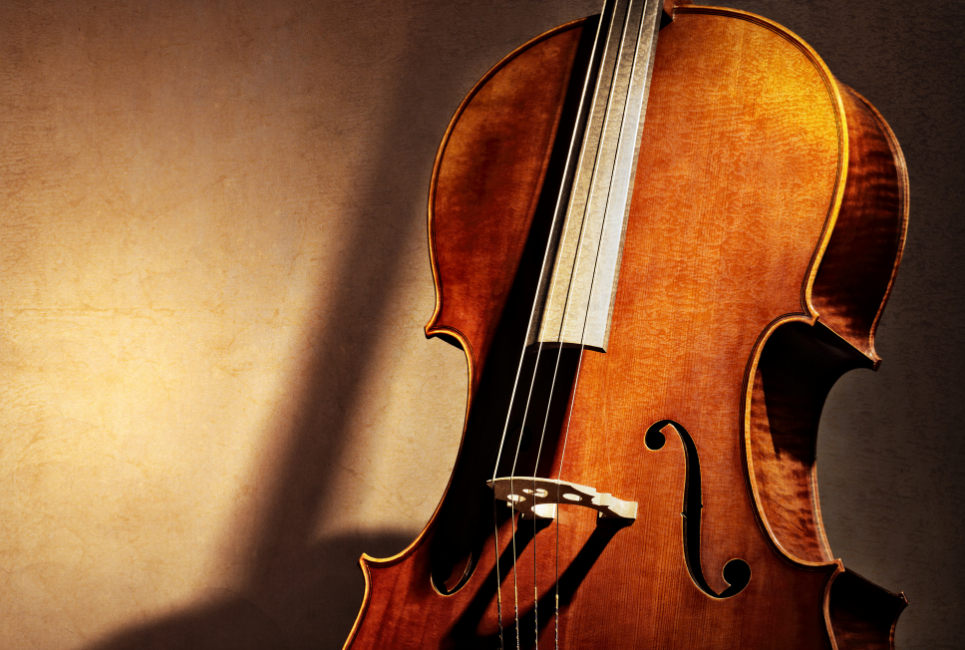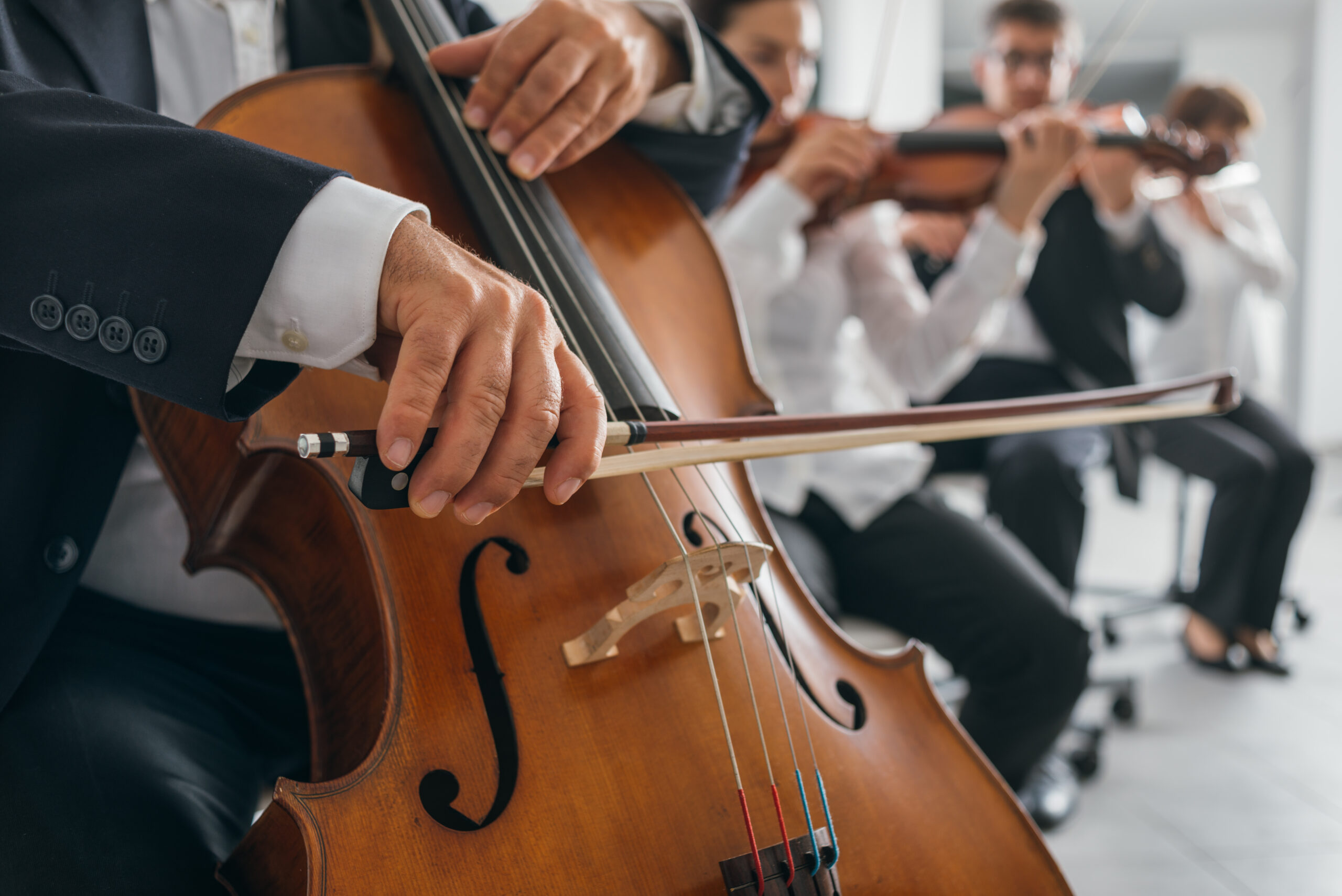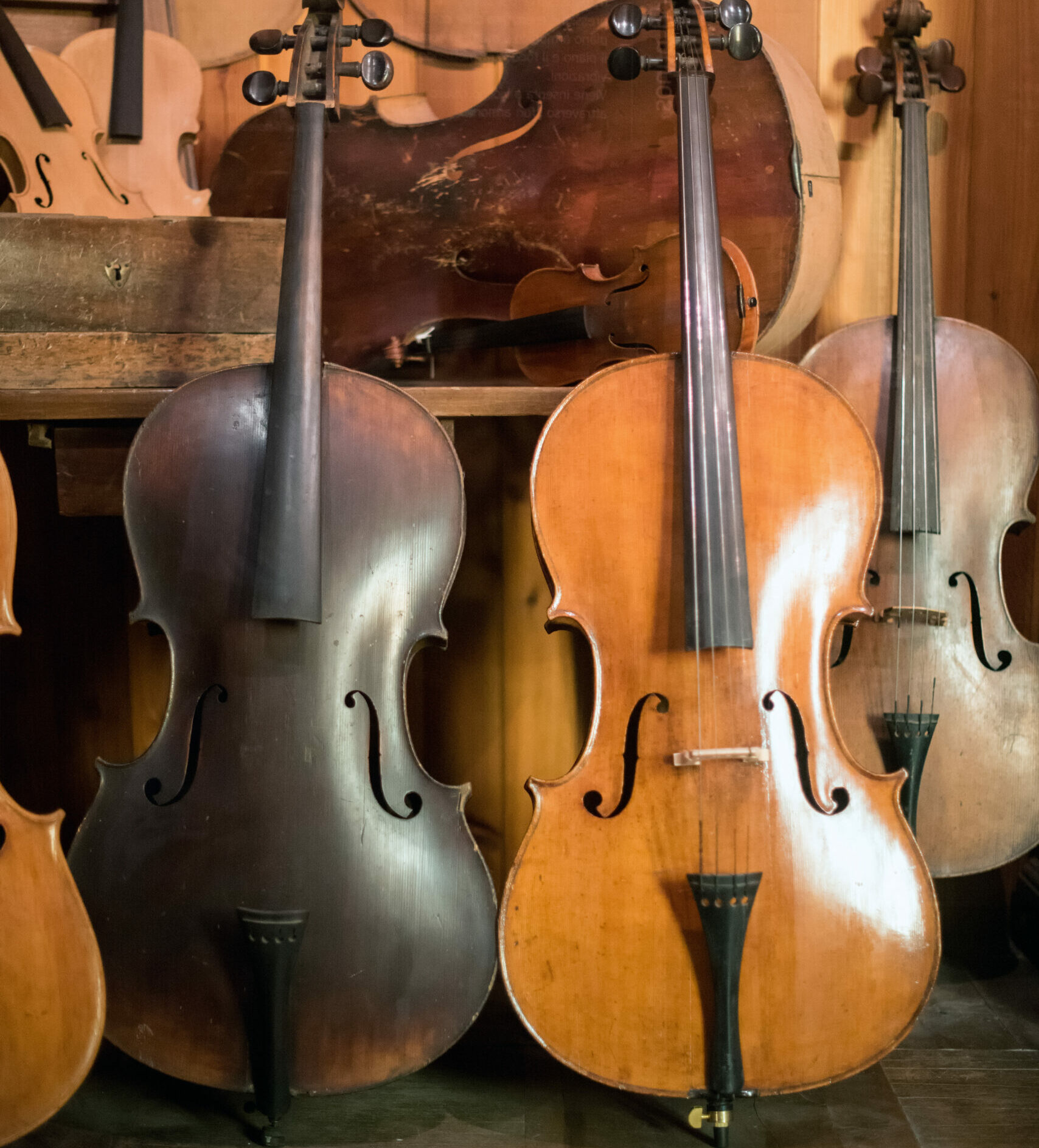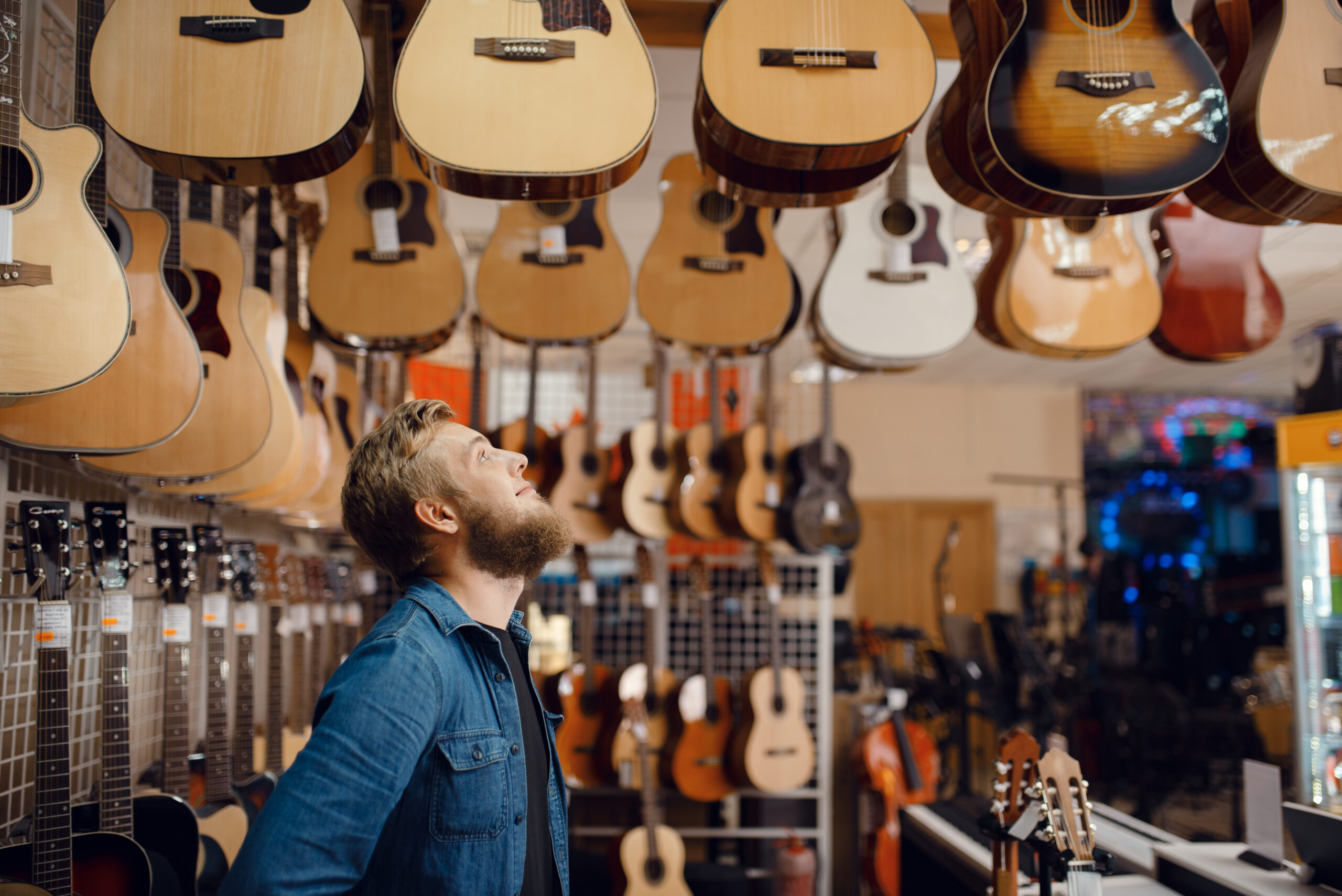- Best 1/8 Cello Guide - January 6, 2022
- Best Cello Tailpieces Guide - January 4, 2022
- Best 3/4 Cello Guide - January 4, 2022
Cellos come in different sizes, and the 3/4 size is the second to largest size after the 4/4 or full-size cello. Suppose you are looking for a 3/4 size cello. In that case, you are presumably around eleven to fifteen years old, or you are reading this article in hopes of buying a cello for someone of that age range. What should you be looking for? There are many things to consider.
Bottom Line Up Front
Cellos aren’t cheap instruments, and a 3/4 cello won’t be the only cello that you or your student will need in their career. For this reason, I suggest renting a Cello but if you do want to buy then
My top pick for quality and price is the Cremona Premier Novice Cello
My top budget pick is the Cecilio CCO-500.
Cello Sizes
To determine the size of cello that you need, you most often go by the player’s height. Smaller adults may never reach full size or feel comfortable playing a 7/8th cello, which is a special size that is slightly smaller and easier to handle than a full size.
- 4/4 – 5′ or taller
- 3/4 – 4’6″ to 5′
- 1/2 – 4′ to 4’6″
- 1/4 – 3’6″ to 4′
- 1/8 – 3′ to 3’6″
- 1/10 – 3ft or under
The Player
You should consider how long the cellist has been playing first. The higher you go in size of violins, violas, and cellos, the more quality you have available to you. In other words, lots of people make and have made lots of good quality full-size (4/4) cellos. However, not as many 1/8 size cellos exist with the same quality craftsmanship and care level. While the quality doesn’t matter nearly as much as a professional instrument, a student cello needs to meet certain criteria to be considered a good starting instrument. If you have a Cellist that has been playing for a while, you will want to aim for a higher quality intermediate cello.
Remember that as your cellist grows up, he will need to get a larger-sized cello anyway. Even if he decides to make a career out of it, then he will need to move up to a more professional instrument beyond that.
Renting a Cello
First, you have to ensure that the student enjoys playing the cello. If he does not enjoy playing, you will have wasted your money buying a very expensive instrument that will just sit there. It is better to get a trial instrument first to make sure that he enjoys it and takes it seriously. For this reason, many people try renting, as it is cheaper than buying an instrument outright, and you can return it whenever your rental agreement ends without having spent the total cost of a cello. Plus, many music stores offer repair and replacement packages that can help with a damaged instrument. Many also allow you to put a portion of your rental cost aside towards purchasing a full-size cello.
Another point is that children are accident-prone. You may find that your child forgets their cello somewhere sometime or lets it drop over or fall on its face. If this happens and the instrument is not salvageable, you are out whatever you spent on the instrument. Another good argument for renting is that the music store offers a repair and replacement package.
Buying a 3/4 Cello
Many people trying to sell instruments online will tell you that having the “best quality instrument” is crucial to development. This is true up to a point. Your beginning cellist will start with things even more basic than scales. They will first have to learn to draw a straight bow, even before playing in tune. Their first notes will be at the top of the fingerboard, not all over the place. Then, they will start on scales.
Lower quality instruments can be hard to play in tune, they can be hard to produce a good tone on, and they can be overall a hassle. The quality of the instrument matters greatly in the child’s music development. This is why getting a good quality student instrument is important even at a smaller size. This is also why I suggest renting a fractional-sized instrument. If you buy a 3/4 Cello, aim for a good quality student instrument or lower-end intermediate cello.
Key Considerations
When looking at Cellos in-store, your seller will be able to help guide you through the process of finding the right instrument for yourself. But if you are looking online, things can get a bit confusing. Not at all Cellos are created equal. The most important thing to consider is the tonewoods, as these create the tone of the violin. Student cellos will have unaged tonewoods, usually from China. The most important thing is that the tonewoods are solid carved maple and spruce, as is standard on cellos. Most student cellos are laminated wood, which is meant to increase durability. It does indeed, in a similar fashion to a screen cover made out of tempered glass, by cracking the lamination, not the wood when dropped. However, the lamination also mutes and dulls the tone. It’s a fine trade-off for new students but can be frustrating for those who have been playing for a while. Those students will prefer a varnished cello. They will also be old enough to care for it properly.
The fingerboard on cheaper student outfits is often maple, which is alright for a cello that will only be used a few years. I prefer an ebony fingerboard. This will last longer and isn’t susceptible to buzzing like maple, or dyed hardwood fingerboard is. Fittings are overwhelming ebony because the black is standard and fits with various finishes. Boxwood is another alternative, it doesn’t matter outside of aesthetics as long as the pegs can hold a tune and the fine tuners on the tailpiece are in working order.
The rest of the cello outfit will include a case, bow, endpin, and typically rosin. Some packages will have several other accessories. It all depends on the seller. The quality of these can be a hit or miss. Over time you will find what type of accessories work for you and what doesn’t.
Price Tag
It’s no secret that Cellos are not cheap instruments, no matter what the size. A good student cello will run around $500 to start, while intermediate Cellos can easily be $1200 to $1500. This is yet another reason why I suggest renting; unlike their smaller counterpart, the violin, Cellos are big and require more material use. This causes the price tag to jump considerably in all aspects of the cello. Renting will allow you to build up credit that will go towards purchasing your forever cello or at least your first full-sized cello.
Product Recommendations
These Cellos were chosen based on reviews, value, and overall quality. I added something for everyone’s budget, but remember Cellos aren’t cheap.
Top Pick
The Cremona Premier Novice Cello is the perfect fit for a new student. This cello is made from solid hand-carved maple, spruce tonewoods, and an ebony fingerboard. This cello mixes quality with an affordable price tag. I particularly like this cello because I know the tonewoods are of decent quality;. At the same time, I’m sure they are from China; someone took the time to hand-carve the body instead of using a machine to do it quickly. Giving it a leg up tonally and value-wise. The ebony swiss-style pegs tune easily. The composite tailpiece is lightweight but has four fine tuners to help students get the most precise tune possible. The outfit includes a soft gig bag that could upgrade if you have small kids or high-energy pets. The bow is essential but will get you started, there is no mention of the strings included, but a trip to a music shop can get you sorted if you don’t like them. Overall, this is the perfect cello for a beginner who wants something of quality but doesn’t want to spend tons of money.
Pros
- Set up in the US for quality control, meaning you won’t need to take it for a full setup, just new strings
- Handcarved tonewoods that help produce a more mature sound
- Decent starter bow
- Cremona is a well-known brand and used as rental instruments
Cons
- Comes with a soft gig bag that isn’t protective
- Will need new strings
Budget Pick
The Cecilio CCO-500 is one of the top-budget Cellos due to its wide availability and inexpensive price tag. This is the only cello worth buying that comes in under 500 dollars. There are a lot of things to love about it too. The tonewoods are hand-carved spruce and maple with gorgeous flaming on the back. The varnish is slightly orange for my taste, but it looks great paired with the ebony fittings and nickel-plated tuners. The mother of pearl inlay adds a nice touch. She is on par with the fitting quality of the higher-end Cecilio stringed instruments. The included strings are Cecilio’s in-house brand which I’m not fond of, but you can have them switch out easily.
The outfit includes a really lovely hard, soft case, which protects a hard case with the maneuverability of a soft case. It even has wheels! I’m not a fan of Cecilio’s bows, so I’d recommend an upgrade. The other accessories include rosin and a Cellos stand. The biggest drawback is that the bridge won’t be set up, and you will need to have your teacher do that or take it to a luthier. Unless you are an experienced musician and feel comfortable doing it yourself.
Pros
- Hand-carved tonewoods in place of machine carved, giving this violin a more mature tone and touch.
- Varnished not laminated
- Ebony fittings with four fine tuners
- Hard/soft case with wheels
Cons
- Will need set up, which could increase the cost
- Poor quality bow
- We will need new strings right away
Step-Up Cello
If you are looking for higher-end cello that could stay with you for much longer, then look no further than the Tower String Entertainer Cello. This cello comes with all things upgraded, including the price. However, you will receive a cello that is primed for years of use at this level. This is especially helpful if you have multiple growing cellists. If you don’t, it means that this cello will get a great price as a trade-in instrument! The tonewoods are solid carved spruce and maple that have been dried for at least 2 years. The fingerboard is ebony, and so are the pegs. The tailpiece is aluminum and has four built-in fine tuners, making for an excellent lightweight student setup. The strings included are Prelude or another steel string set, depending on the instrument. The case consists of a lightweight hard foam case and carbon fiber bow, along with Holstein premium rosin. An endpin stop, practice mute, polishing, and cloth and tuner are also included.
Pros
- Comes with high-quality accessories
- Aged tonewoods that will help produce a mature sound
- It will be worth more as it ages and therefore receives an excellent trade-in price if kept in good condition.
- Comes fully set up and ready to play
Cons
- Very expensive for a new student, better for a student who has been playing for awhile
Fancy Pick
There are some really fancy cellos out there, even for students, and The StringWorks Crescendo is no different. StringWorks develops their cellos under the direction of professional cellists, so you can be assured you are receiving something that they would play as well. Made solid carved flamed maple and spruce tonewoods and ebony fittings, this cello really is gorgeous. The deep amber varnish is nicely antiqued, giving a mature look that will look great on stage. The Witnner tailpiece comes with four built-in fine tuners and is one of the standard student tailpieces on the market. The included strings will vary from cello to cello but are most often Prelude, Kaplan, or Helicores. This cello does not come with an outfit, but you can work with StringsWorks to build one for a discount.
Pros
- Created under the direction of professional cellists
- Antique finish
- Quality flamed tonewoods
- All ebony fittings
Cons
- Very very expensive
- Does not come with an outfit for the price.
FAQs
Answer: There are many popular brands, like Eastman, Fiddlershop, Cremona, and Cecilio, that make quality student instruments. You will find instruments at various price points and sizes to please any student.
Answer: If you are brand new to playing the cello, the good news is most rented cello outfits or student cello outfits come with everything you need to get started, like rosin, a bow, and an endpin stop. Some may include an introductory package with a music stand other goodies. Don’t forget a comfortable chair to sit comfortably with your feet on the floor.
Question: How do I hold my cello?
Answer: The cello is an awkward instrument to hold, especially at first. I know I found it weird.
- Sit towards the front of a chair with a firm base with your feet flat on the floor.
- Adjust the endpin so the back of the cello is chest height and the cello is between your knees.
- Gently grasp the cello with your knees and place the neck, and scroll to the left of your head with the lower tuning peg about the same height as your ear.
- Angle the cello so you can comfortably reach all strings and use an endpin stop to keep the cello from slipping on the floor.
Playing the cello can be a wonderful experience! It is important to always encourage your child, and never discourage them. Playing an instrument teaches children problem-solving skills that apply in all areas later in life. As long as your child loves playing, that is all they need to excel. If you are looking for a 3/4th cello, then chances are you or your child is still growing. Many people rent while still using fractional instruments to save the hassle of trade-ins or selling. Suppose you really want to own your own cello or have multiple growing cellists. In that case, the Cremona Premier Novice, Cecilio CCO 500, and the Tower Strings Entertainer Cellos will service you well.
Looking for more interesting readings? Check out:




